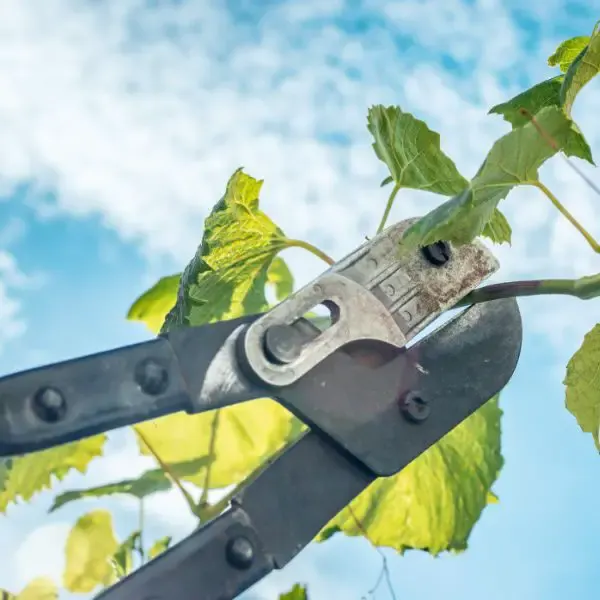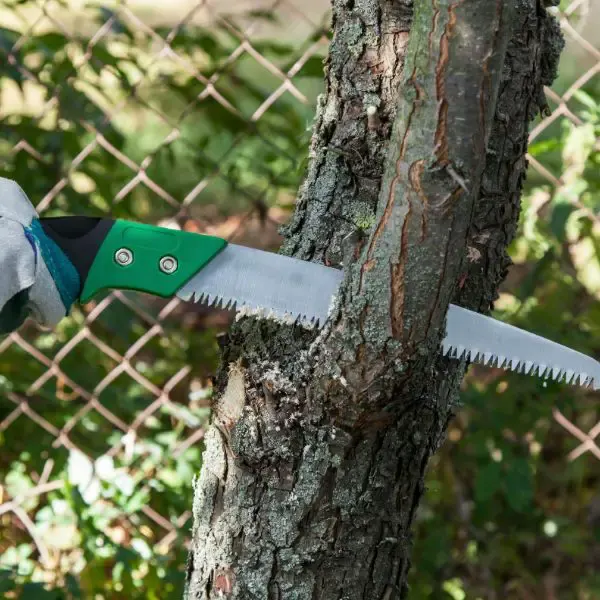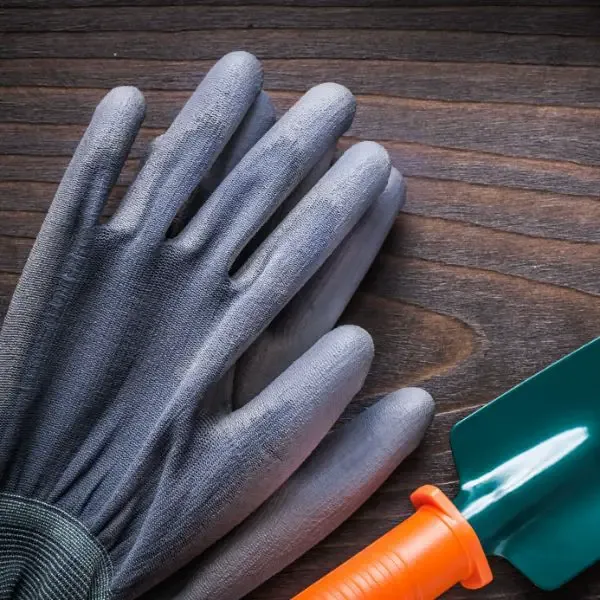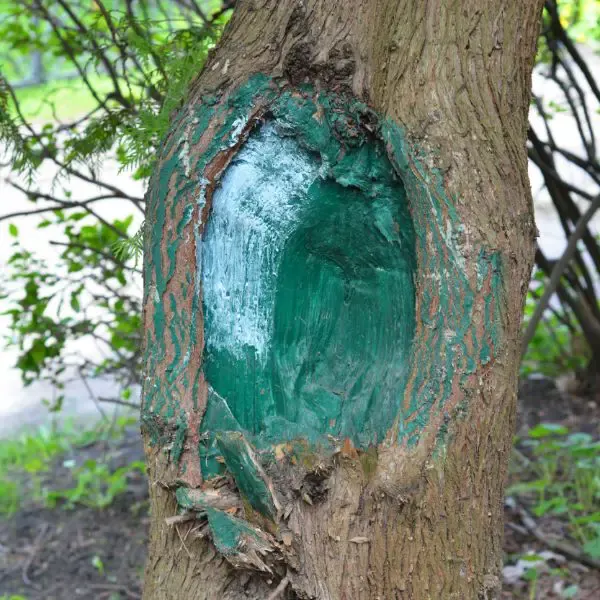Learning how to prune a rubber plant is crucial, as it involves routine trimming to regulate its size, encourage denser growth, and uphold its visual allure.
By adhering to correct pruning methods and timing, you can skillfully mold your rubber plant’s shape and secure its healthy growth. Read on to unearth invaluable tips on effectively pruning and nurturing your rubber plant.
Table of Contents
Rubber Plant Introduction
Rubber plants (Ficus elastica), also known as India rubber tree, are popular indoor plants appreciated for their attractive foliage and easy care requirements. They are indigenous to Southeast Asia, especially India, Indonesia, and Malaysia.
Rubber plants belong to the Moraceae family, which includes figs, mulberries, and breadfruit. They have large, leathery and glossy leaves that are typically dark green in color. The leaves are thick and oblong, up to 30 centimeters (12 inches) long.
Native to tropical rainforests, they can grow into massive trees with aerial roots in their natural habitat. When grown indoors, these plants can grow quite tall, reaching heights of up to 3 meters (10 inches).
Due to their tolerance of various light conditions and adaptability to different environments, rubber plants are suitable as indoor plants. They prefer warm temperatures, and do very well in average room conditions.
Rubber plants can endure low light but they do best in bright, indirect morning light. Direct sunlight may scorch their leaves so this should be avoided. They favor moderately moist soil, but are prone to root rot if watered excessively. It is better to underwater rubber plants than overwater them.
They proliferate in well-draining soil, and appreciate higher humidity levels. Humidity around the plants can be achieved by occasionally misting the leaves, or placing the plant on a tray filled with water and pebbles.
Rubber plants can be propagated through stem cuttings. They can be planted in a well-draining potting mix by taking a cutting with a few leaves and treating the cut end with rooting hormone. It is critical to keep the soil moist until the roots develop.
The Indian rubber plant is prominent for its awesome air-purifying capabilities. It effectively removes toxins like formaldehyde and benzene from the environment, making them practical for indoor spaces.
There are specialized cells within rubber plants that produce a milky sap called latex. Latex is released as a defense mechanism when the plant tissue is damaged or cut. This milky sap can cause skin irritation and may be toxic if ingested.
Rubber plants are not only visually appealing but also relatively low-maintenance, making them a popular choice for indoor gardening enthusiasts. With proper care, they can flourish and add a touch of greenery to your living space.
Rubber plants are quite resilient and grow large, so they need pruning to control their size. In this article, you will discover essential care and pruning techniques for rubber plants. You will also learn of the benefits and significance of pruning.
Why Should I Prune My Rubber Plant?
It is important to prune your rubber plant for a myriad of reasons. Rubber plants can grow rather large, and you should prune them to manage their size, making them more suitable for indoor spaces.
Pruning your rubber plant will stimulate branching, leading to a fuller, bushier appearance. It can remove straggly, untidy and uneven growth. This helps create a more compact plant shape, resulting in a visually appealing and well-groomed plant.
You are required to prune your rubber plant in order to remove dead, diseased, or damaged branches. This will ensure the plant’s overall health, and help prevent the spread of any potential diseases.
Pruning rubber plants opens up the plants’ leaves and foliage, allowing better air circulation and reducing the risk of fungal diseases and pest infestations. Pruning can also rejuvenate older plants by stimulating new growth.
What Should be Pruned?
Remove dead, dying, broken or diseased branches. This should be done before the plant produces new growth, so that it does not expend energy on damaged areas. You can also prune older wood that no longer produces flowers.
Detach branches that are growing across each other, because branches that touch can chafe and create an access point for insects and disease.
Extract low branches and branches that grow at a downward angle. They could expose the plant to disease and pests if they eventually make contact with the ground.
Prune the long shoots that grow out of the base of your plant or from its roots. They are known as suckers, and they only drain the plant’s energy.
Trim shoots growing up straight from the main branches of your rubber plant. This will help to guide the shape and growth pattern of the plant, as well as prevent branches from overlapping and chafing.
When Should I Prune My Rubber Plant?
Generally, you can prune your rubber plant at any time throughout the year, but the optimal time is late spring to early summer, around June. If you prune outside of the plant’s growing season, it could potentially delay new growth.
It is also best to prune in the evening, as the plant will secrete less latex at this time of day. Spring is the ideal time to take cuttings if you want to propagate your rubber plant.
How Much Should I Prune My Rubber Plant?
The extent to which you prune a rubber plant will vary depending on your specific goals and preferences, the plant’s condition, and its growth habitat. Monitor how the plant responds to pruning and adjust the amount of future pruning accordingly.
If you want to manage the size of your rubber plant, you can trim it to achieve your desired height and width. You should be careful not to remove more than one-third of the plant’s foliage at a time to avoid excessive stress.
If your rubber plant has become sparse or straggly, you can prune it more aggressively to revivify its growth. Trim back excessive growth, focusing on areas with sparse foliage, to stimulate new growth and revitalize the plant’s appearance.
When pruning, ensure you make clean cuts just above a leaf node or lateral branch junction. Avoid leaving stubs or cutting too close to the main stem. You should start with minimal pruning and evaluate the plant’s response before further trimming if necessary.
How to Prune A Rubber Plant
Pruning Equipment
To prune your rubber plants, you will need the following tools and equipment:
1. Pruning Shears

Pruning shears, also known as secateurs or hand pruners, are used to make clean, precise cuts on small to medium-sized branches.
2. Loppers

If your rubber plant has thicker branches, loppers with long handles and larger cutting blades are effective for cutting through them.
3. Pruning Saw

A pruning saw becomes necessary when dealing with thicker branches that cannot be easily handled by pruning shears or loppers.
4. Gloves

It is crucial to wear protective gloves while pruning, in order to shield your hands from potential skin irritation caused by the rubber plant’s sap, and to avoid any accidental injuries.
5. Disinfectant

It is advisable to have a sanitizing solution, such as alcohol or bleach, to sterilize your pruning tools before and after you use them. This is helpful for preventing the spread of diseases or infections during cuts.
6. Safety Goggles

To safeguard your eyes from any debris or plant material that may dislodge during pruning, you should put on protective eyewear.
7. Pruning Sealant (optional)

A pruning sealant is a wax-like substance that can be applied to the cut ends of larger branches. It helps prevent moisture loss and reduce the risk of disease entry. It is not mandatory to use.
Ensure that your pruning tools are sharp and well-maintained before starting the pruning process. This will ensure clean and precise cuts, facilitating the plant’s proper healing and minimizing stress.
Pruning Techniques: Pinching vs. Cutting
When it comes to pruning a rubber plant, two common techniques you can employ are pinching and cutting.
Pinching
You can use your fingers or pruning shears to pinch or remove the tips of young shoots or stems. This is done to promote branching and a denser, bushier growth.
Pinching usually involves removing just the topmost part of the stem or shoot. It is ideally used for young plants or when you want to maintain a specific size or form.
Cutting
Cutting is used to remove unwanted or problematic branches, such as dead, damaged, or overgrown ones. In this technique, you’ll use pruning shears, loppers, or a pruning saw to make clean cuts on branches or stems.
When cutting, make the cut just above a leaf node or lateral branch junction to make sure your plant heals properly and regrows.
Cutting is commonly used for maintenance. You should use this method to address issues like unruly growth, damaged or unhealthy branches, and size management.
Pruning Rubber Plants for Different Reasons
1. Pruning to Control Growth
If your rubber plant has grown too tall and is reaching the ceiling, it’s important to take necessary measures to control it. You can contain its growth by removing the entire crown of the plant.
Simply use pruning shears to trim your indoor plant down to the desired height. When pruning, make sure to cut just above a node, which is the point where a leaf or branch grows off the main stem. This will encourage new growth to form at that point.
You should only prune your rubber plant when it is actively growing, which is typically during the spring and summer months. After pruning, water the plant well to help it recover.
With proper care, your rubber plant will continue to grow and thrive, even after you have trimmed it down.
2. Pruning for Bushier Growth
To promote bushier growth in rubber plants, the following pruning process can be followed:
- Gather your supplies.
- Inspect the plant. Identify the branches or stems that you want to encourage bushier growth on. First remove any dead, damaged or diseased leaves or branches.
- Pinch or trim the tips of these selected branches using your fingers. This will stimulate the growth of lateral buds beneath the pinch point.
- Focus on pruning the topmost portion of the selected branches. This will encourage new growth and make the plant bushier.
- Make clean cuts just above a leaf node or lateral branch junction.
- Repeat this process for all the branches or stems you wish to promote bushier growth on.
- Monitor the plant’s response to pruning.
- Water the plant well, to help it recover.
Pruning for bushier growth should be done during the plant’s active growing season. Regularly assess the plant’s overall appearance and adjust your pruning techniques accordingly.
By following these steps and consistently promoting bushier growth through pruning, you can achieve a more lush and compact rubber plant with abundant foliage.
3. Pruning for Aesthetic Purposes
To prune a rubber plant for aesthetic purposes, follow these steps:
- Gather your pruning tools.
- Assess the plant, and identify the areas that require pruning. Look for uneven leaves or branches, or any parts that detract from the desired aesthetic appearance. These should be removed first.
- Consider the desired shape of the plant. What kind of aesthetic are you going for? Do you want the plant to be tall and narrow, or short and bushy? Once you have a general idea of what you want, you can start to make your cuts.
- Prune the top of the plant. This will encourage new growth and make the plant bushier. Cut just above a node, which is the point where a leaf or branch grows off the main stem.
- Trim back long, straggly branches to promote a more compact and well-proportioned appearance. These can be cut back to a node, or even removed completely. Focus on maintaining a balanced silhouette.
- Trim branches selectively to shape the rubber plant according to your aesthetic preference. Create a pleasing overall form by removing any branches that disrupt the desired shape.
- Regularly step back and evaluate the plant’s appearance as you prune. Ensure you’re achieving the desired aesthetic effect and make further adjustments if needed.
- Water the plant well. Pruning can stress a plant, so it’s important to water it well after pruning. This will help the plant recover and promote new growth.
Remember to be patient with the pruning process and take your time to achieve the desired aesthetic outcome. It’s important to make precise and deliberate cuts to maintain the health and vigor of the plant while enhancing its visual appeal.
Pruning Tips for Variegated Rubber Plant Varieties
Variegated rubber plants have attractive patterns and colors on their leaves. When it comes to pruning these varieties, here are some useful tips to keep in mind:
- When pruning, be mindful of preserving the variegation. Prune selectively and avoid removing too many variegated leaves. This will help maintain the unique aesthetic appeal of the plant.
- Aim for a balanced appearance by pruning the plant uniformly on all sides, to ensure even distribution of the variegation. Focus on creating a pleasing shape that showcases the variegation.
- Prune less frequently because variegated rubber plant varieties tend to grow slower than their non-variegated counterparts.
Safety Precautions when Pruning Rubber Plants
Rubber plants produce a milky sap that can be irritating to the skin and eyes. By observing the following safety measures, you can prevent any potential injuries or health problems when pruning your rubber plant.
- Put on protective gloves and eyewear to shield yourself from the sap.
- Work in a breezy, well-ventilated area to avoid inhaling the sap.
- Carefully dispose of prunings, as the sap can be poisonous if ingested, especially for children and pets.
- Wash your hands thoroughly after pruning to get rid of any sap residues.
- Use sharp pruning tools to make clean cuts. This will help minimize the amount of sap leaking out.
- Prune the plant in the morning or evening, when the sap flow is reduced.
- Do not prune during hot, dry weather. This can stress the plant further, and make it more vulnerable to pests and diseases.
Additionally, consider the following tips:
- If you are pregnant or have sensitive skin, it is best to avoid pruning rubber plants altogether.
- If sap comes in contact with your skin, promptly wash it off with soap and water.
- If sap does get into your eyes, rinse them with water for at least 15 minutes. Seek medical assistance if your eyes continue to burn.
Aftercare and Maintenance Following Pruning
After pruning your rubber plant, it’s crucial to provide proper maintenance and aftercare to make sure it recovers from pruning, remains healthy and keeps growing. Here are some aftercare tips:
- Water the plant well, but do not overwater it. Pruning stresses a plant, so watering is important to help it recover and promote new growth.
- Fertilize the plant as usual, but don’t do this right after pruning, as this can stress it further. Instead, wait for a week or two before you resume fertilization.
- Place the plant in a well-lit area. If you’ve pruned your plant heavily, you may need to move it to a brighter location. Rotating the plant will help all its sides receive equal sunlight.
Keep an eye on your plant for any common houseplant pests and signs of diseases. Pruning can create open wounds on the plant, making it more susceptible to pests and diseases.
- Regularly clean the leaves of your plant to remove dust and dirt. Clean leaves boost the plant’s ability to photosynthesize, enhancing its growth and overall health.
Troubleshooting Common Issues Encountered during Pruning
During the pruning process of a rubber plant, you may encounter some common issues. Here are a few troubleshooting tips to help you address them:
- Over pruning. Removing an excessive amount of foliage during pruning can stress the plant and hinder its growth. If you notice that you’ve removed too much, monitor the plant closely and provide proper care to ensure it recovers.
- Making cuts too low. If you make cuts too low on the stem, you may damage the plant’s main root system. This can lead to the plant becoming unstable and even dying. To avoid this, make sure to cut just above a leaf node or lateral junction.
- Not making clean cuts. If your cuts are not clean, the plant may be more susceptible to pests and diseases. To make clean cuts, use sharp pruning shears and make sure to cut all the way through the stem.
- Pruning during the wrong time of year. Rubber plants are most actively growing during the spring and summer months. If you prune your plant during the fall or winter, it may not recover as well. It is best to prune your rubber plant during the spring or summer.
- Lack of aftercare. It is important to provide proper care after pruning. This includes sufficient watering, suitable lighting conditions, and adequate fertilization. This will help the plant recover and promote new growth.
- Not wearing gloves and eye protection. The sap from rubber plants can be irritating to the skin and eyes. To protect yourself, wear gloves and eye protection when pruning your rubber plant.
If you encounter any problems or are unsure about how to proceed during the pruning process, it’s recommended to seek advice from a local horticulturist or plant expert.
Conclusion
Pruning your rubber plants is an essential practice that enhances their overall health, appearance, and ease of care. Understanding the techniques of pruning helps you effectively shape and maintain your rubber plant to fit your desired size, shape, and style.
Whether you choose to employ pinching for denser growth or cutting for revival and maintenance, the key is to make clean cuts and carefully observe the plant’s response.
Regular pruning helps control the plant’s size, encourages lush foliage, eliminates dead or damaged branches, improves air circulation, and restores vitality in older plants.
Ensure you use the appropriate tools, wear protective gear, and follow proper pruning practices to ensure optimal results. With careful pruning, your rubber plant will flourish and gracefully adorn your indoor space for years to come.
More plant stuff
